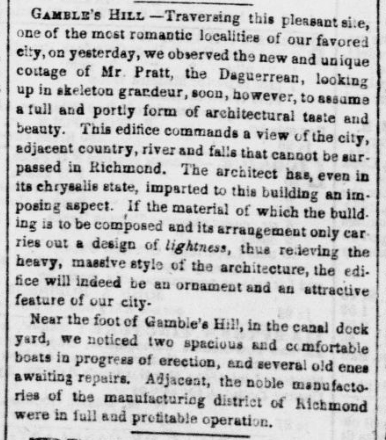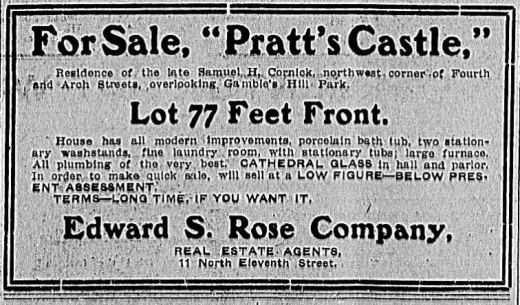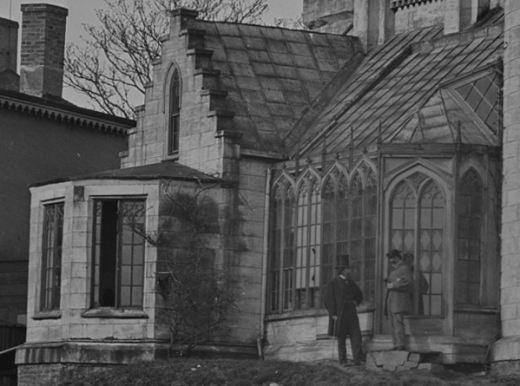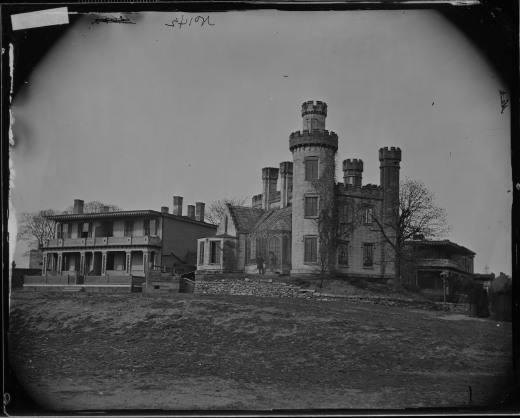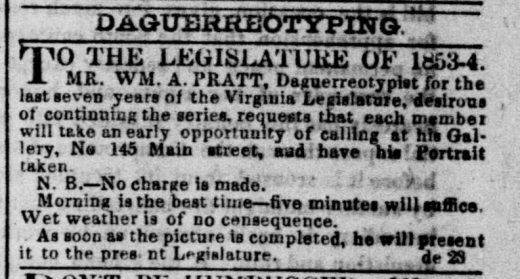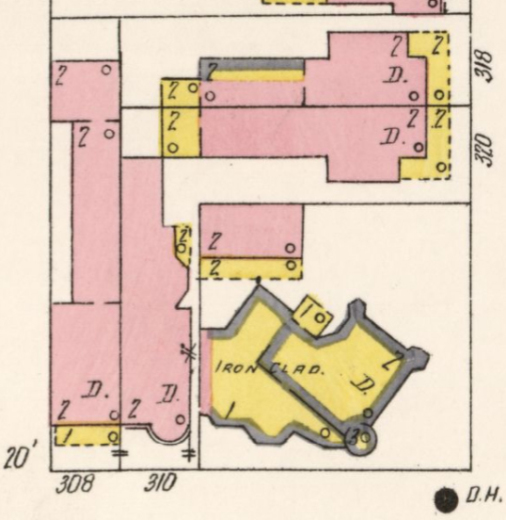Quite visible from Oregon Hill was one of the most celebrated buildings of Richmond, known as Pratt’s Castle (Folly or Cottage). This building with crenelated towers was constructed on Gamble’s Hill above the Penitentiary Basin by a master of the daguerreotype, William Pratt. An article in the Daily Dispatch from February 1853 records that the unusual edifice was under construction: “[W]e observed the new and unique cottage of Mr. Pratt, the Daguerrean, looking up in skeleton grandeur … The architect has, even in its chrysalis state, imparted to this building an imposing aspect.” This reporter also notes that two “spacious and comfortable” canal boats were being built in the Penitentiary Basin below Gamble’s Hill.
A later article in the Times Dispatch from May 1904 details the rich contents of the castle, lately owned by Samuel Cornick and his wife Hennie, the daughter of Mayor Joseph Mayo. All of the extensive art work, silver, china and diamonds were being sold, including, “25 tons of coal, stores of provisions sufficient to withstand a siege of famine …”
An advertisement for the sale of the castle in 1906 highlights the “cathedral glass” in the hall and parlor. This cathedral glass is notable in the 1865 photograph (detail) of Pratt’s Castle taken by Matthew Brady, found in the National Archives.
In 1958, Ethyl Corporation demolished Pratt’s Castle, one of Richmond’s most distinctive buildings, over the strong objections of Richmond’s preservationists. Around 1983, Ethyl Corp. traded Brown’s Island on the flood plane for the city’s prominent Gamble’s Hill Park with spectacular river views.
Photo credits:
Daily Dispatch, February 4, 1853, Library of Congress
Times Dispatch, July 1, 1906, Library of Congress
Pratt’s Castle, by Matthew Brady, National Archives
Pratt’s Castle, by Matthew Brady (detail), National Archives
Pratt advertisement, February 6, 1854, Daily Dispatch, Library of Congress
Pratt’s Castle, 1905 Sanborn map, Library of Congress

